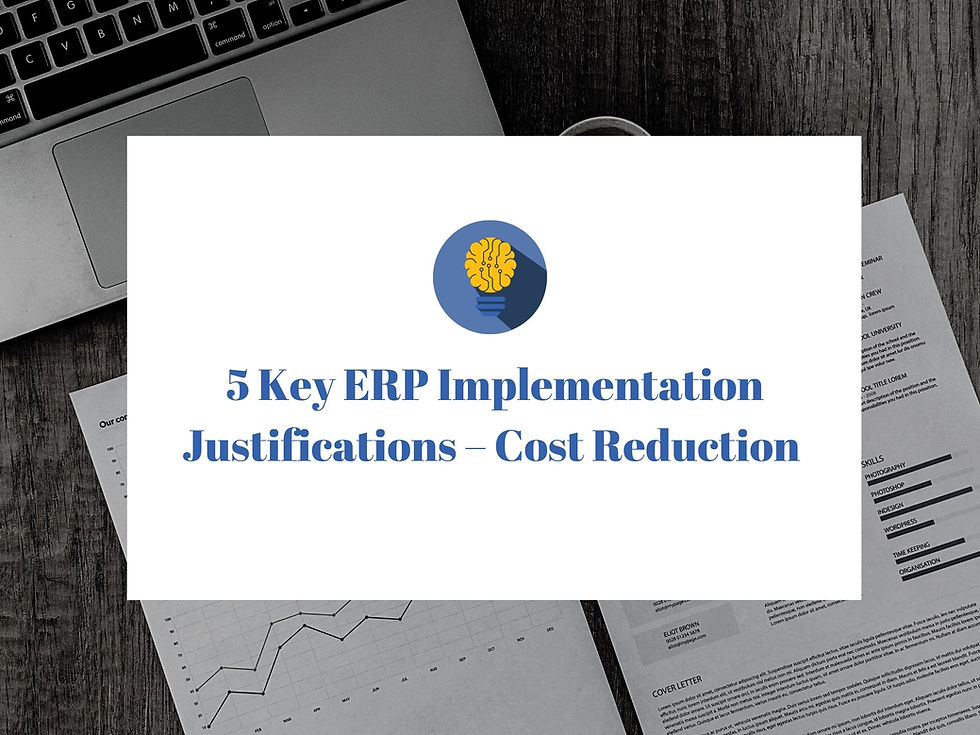
Note to reader – upcoming blog content will utilize a Human Resource specific ERP implementation but same model in any other scenario.
The second aspect in the 5 Key ERP Implementation justification in this blog will focus on:
Consolidation of Information Technology (IT) Systems
Cost Reduction
Business Process Reengineering
New Application Technology
Bad Decisions Making
Cost Reduction
Money, Money, Money – spending it vs. saving it – that is always the bottom line in any ERP Implementation. Okay, now that I have the attention of the financial folks reading this blog 😊 – the cost reduction aspect of your ERP implementation justification needs to be carefully thought through and documented with as much detail as possible.
Yes, you heard me – no swag level estimates, guesstimates or maybes on cost savings or investment dollars. You have to speak facts and figures – nothing sexy about this work – but it will validate that you are serious about making this happen.
If you don’t provide details, the request for a Human Resource ERP implementation can come across as begging to finance leadership – like a kid a Christmas telling his parents that he has to have that new toy every time he sees the commercial – he’s got to have the “new” “cool” toy but can’t really explain why? And don’t even think about saying “everyone else has one of those toys - so I need one too” to justify your request. Because, the finance leadership response will be – “well what’s wrong with the system that we have now…it works.” All kidding aside, ideally, you need to validate values related to costs at the detailed expenditure level and at the transactional level to determine potential savings by implementing a new system.
To structure your approach think about breaking down the costs into two groups: Operational Costs and Transactional Costs.
Expenditures related Operational Costs are defined in areas like:
software application licenses or per user fees,
hardware costs (if you run an on-premises model)
system maintenance costs
integration processing
system administration
labour-based support costs
Understanding these costs in detail will enable you to correlate the costs associated with your new Human Resource ERP system and ideally there will be incremental savings that you can point to soon after your system is live.
Transactional Costs are often difficult to quantify as most organizations don’t do this level of analysis in the back-office processes. Do you know how long it takes to set up a new Supplier? How long does it take to hire a new employee? How long does it take for an employee to create an expense report and get it approved? How many days does it take to complete your Finance month-end processes? You get the idea.
It is imperative to do detailed analysis at the transactional level for all the functional areas that you are planning to have in scope for your implementation for two reasons - Hard and Soft Costs.
Hard Costs are things you can track at a detailed level - for example: Let’s say your organization has 1000 people/month entering expense reports and it currently takes 15 days in duration to complete the entire cycle – submission, review, approval and payment. Reducing the processing time for an employee to complete and get an expense report approved and processed is a critical issue to be addressed. A clearly defined baseline allows you to ask the various Software Vendors (and their reference clients) the average time needed to complete this process within their applications. Reducing this to 5 days would be a huge improvement for your organization and a critical factor to justify the new ERP from a hard cost perspective. Reduction of labour hours, reduced errors and rework, automated processing, and approvals in the new application etc. These “Hard Costs'' are factual and validated.
“Soft Cost” reductions/benefits that increase employee satisfaction:
a better and efficient process
less management oversight due to reduced error handling and rework
employees can allocate more time to running the business not doing expense reports
These items are often subjective but just as important to an organization – so don’t undervalue this aspect of the cost reduction model. But don’t necessarily expect software vendors to provide details at that level – they will give you generalities and trends that are valuable, but you need to look at your own company’s specific strategic goals, objectives, and situation aspects.
Doing this type of work is what we live for – really – we actually like doing the math. 😊 Contact us and let us help you get all the various costs and potential savings into the equation before you make that final decision.
Up next, we will dive into Business Process Reengineering as a driving justification for your ERP implementation – see you there!!!
.png)

コメント